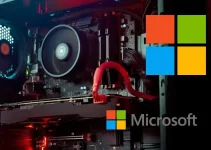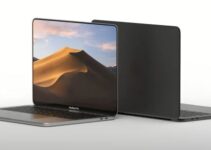Apple Company, while in struggle to switch on wireless-first future device, in light of new European law which made all cellphone manufactures to introduce same kind of charger for all type of phone devices, has adopted USB-C type port.
Where is in new Pixel smartphone, wristwatch and iPados 16 developers still lamenting the conditions.
According to Power On last week, the Apple Watch Ultra’s bigger battery and better screen make it worth its price.
Beginning
A few years ago, Apple Inc. had to switch to USB-C for charging his iPhone and other mobile devices. After all, some laptops moved to USB-C in 2015, followed by the iPad Pro in 2018.
If you’re an Apple fan rooted in the ecosystem of iPhones, AirPods, iPads, Apple Watches and MacBooks, at least he needs three different chargers. Lightning for iPhone and AirPods, USB-C for iPad Pro and MagSafe for MacBook and Apple Watch.
Conveniently, the watch charger can also be used to charge the headphones. Additionally, Apple released his second MagSafe model for charging laptops. But that’s a far cry from Apple’s minimalist technology philosophy.
I understand that this is the first world version. Don’t bring up the smallest fiddle yet. Those who can get their hands on all these gadgets wouldn’t hurt too much. However, Apple can and should make changes in this area.
Apple’s billing method seems much simpler than I described him over a year ago. Partly due to the influence of the European Union, it will soon come to fruition. For about five years, the EU has been pressuring device manufacturers to standardize USB-C, citing interoperability and environmental benefits.
The EU made another step in that direction this past week when it passed a law requiring manufacturers of a wide range of devices (including phones, tabs, cameras, headphones and headsets, e-readers, keyboards, mice, mobile navigation systems, and portable game consoles and speakers) will adopt USB-C till the end of 2024 for upcoming products. Laptop will also get in this law by the spring of 2026.
The European Parliament passed the EU law this Tuesday, closing the deal for the rule to go into effect in two years despite legislators having approved it in June.
Apple, in the past, has publicly repelled the change, with argument that that “tight legislation mandating only one type of connector stifles innovation rather than fostering it, which will disturb not only European but global users.”
Apple, behind the scene, is planning for this regulation. I believe that the companies with its most noticeable devices will even easily surpass the deadline. The iPhone 15 will almost certainly support USB-C in the fall of 2023, pushing the deadline forward by a year. By the end of the year, the only iPad that still doesn’t have a USB-C port (the base model) should have one.
AirPods, Magic Mouse, Magic Keyboard and Magic Trackpad are the only devices that will eventually need to be changed.
According to the law, the deferral applies to new devices. Let’s assume in March 2024 Apple releases an iPhone SE that uses Lightning instead of USB-C. As it was introduced by the end of 2024, the device is not considered non-compliant in the EU. Simply put, the 2025 or 2026 models will require changes.
I don’t think we’ll wait too long for Apple to support his USB-C on all of their products though
By 2024, all future iterations of regular AirPods, AirPods Pro, and AirPods Max should switch to USB-C.
Next year, expect big improvements to the Mac, including the new iMac and Mac Pro. It seems to be a movement accompanying the change of accessories. Given how infrequently Mac accessories change, I think it’s a fair bet that this accessory will move to USB-C in the next iteration.
So why would Apple openly defy the law and covertly prepare changes? The company knows this decision is in the best interest of its customers and the greater Apple ecosystem. However, we cannot formally endorse the EU position. It sets a dangerous precedent as the government appears to control product development strategy. If you don’t like how your Apple product works, try changing it. There are legal remedies.
Apple wants to be able to claim that they made their own decision to switch to USB-C. Apple would undoubtedly defend it by claiming it has a streamlined approach to charging all its products, transferring data faster, and starting to power up. At least for Apple’s mobile devices, I think the lifespan of USB-C is much shorter than the lifespan of the 30-pin iPod connector or Lightning. Eleven years after the iPod connector came along, Lightning was part of the iPhone. In my opinion, the future for Apple is wireless, and I think the 2017 AirPower project will finally become a reality – certainly not in the next decade. We plan to switch completely to inductive charging for iPhones and iPads in time.
The EU argues that smartwatches and other devices that do not charge via a wired connection are exempt from the new law. So Apple’s wireless future and inductive charging must be a good workaround.
This assumes that the company will be able to master the technology at some point.
Seat
Google releases Pixel 6S. So it’s a Pixel 7. Like its first Pixel Watch. Google, a subsidiary of Alphabet Inc., completed a bizarre rollout of its latest device on Thursday.
The company unveiled his Pixel 7, Pixel 7 Pro, and first Pixel Watch in May, showing off the design and explaining some of its features. Since then, the company has added product details to its website, and social media has already been flooded with unboxing videos and videos directly explaining how the gadget is used.
The rookie’s long ball isn’t over yet. Google showed off the new device once again, providing feature details such as camera upgrades, internal specs and pricing at its launch event in Brooklyn. The company’s decision to use a delayed release strategy is bizarre as it will no doubt reduce sales of the company’s current offerings. Is not it? But from a media perspective, it’s funny.
Unlike last year, the new pixels have nothing. Google could have simply called its latest phone the “Pixel 6S.” Aside from the newly developed rear camera sensor, the new phones look similar to the Pixel 6 lineup.
Includes the return of the Face Unlock feature Google also announced the first wearable device to rival the Apple Watch. It combines a pixel design philosophy with the fitness tracking features he purchased from Fitbit a few years ago. Google uses a similar method to counter Apple’s band and watch face customization.
The regular Apple Watch Series 8 starts at $399, while the Google Watch for devices without cellular starts at $349. Google also announced the first wearable device to rival the Apple Watch. It combines a pixel design philosophy with the fitness tracking features he purchased from Fitbit a few years ago.
Google uses a similar method to counter Apple’s band and watch face customization. The regular Apple Watch Series 8 starts at $399, while the Google Watch for devices without cellular starts at $349.
It turns out that Stage Manager (obviously) works on iPads other than the M1 model. But there are still many bugs. I didn’t get a chance to talk to the Stage Manager about any major adjustments last week, but they’re important enough to be implemented immediately.
After claiming since WWDC that the software needed the M1 chip and increased memory bandwidth for its latest devices, Apple made a rather significant mistake about the feature in September, and pushed it to the chipless iPad.
The feature will be available on iPad Pro models with the A12X and A12Z, so you can use it on devices with the 2018 design. Apple insisted it needed an M1, but it always makes sense that by 2020 the software would work on at least an A12Z-equipped iPad Pro device. Remember, this chip served as the first Apple Silicon test processor for Macs.
There is a small catch though. Older iPad Pro models cannot extend Stage Manager to external displays. Estimates that less than 1% of his iPad Pro users connect to the display, so I don’t think this is a big deal.
External display support was also removed from the M1 iPad Pro in iPadOS 16.1 and should be brought back to the M2 iPad Pro in iPadOS 16.2.
This improvement is a nice recognition and turnaround, but it still ignores the core issue. Stage Manager is still a mess and not the best tool for professional users to multitask. I firmly believe that an interface that emulates Mac multitasking is your best bet.
We have tested the Stage Manager with the latest beta of iPadOS 16.1 and it is still buggy. Sometimes it crashes on the home screen, sometimes it lags, and it’s often hard to use.
Making Stage Manager available on older iPads is definitely a nice touch, but it doesn’t change the fact that the program is still a glaring flaw in engineering and design.
Roster Changes
Another key Apple Car executive leaves the company to join Rivian. If you’ve read this a dozen times in the last two years, stop. Another handsome senior executive on Apple’s upcoming electric car development team has retired. This time, Jonathan Sive is the culprit. At Alphabet, he worked at BMW, Tesla, and Waymo before joining Apple about two years ago.
At the time, I wrote about his Apple adoption of his Sive and mentioned that he would be working on hardware development and car design. Despite his departure, work on the car is still underway, and I believe the company hires key Ford and Lamborghini employees to help in that effort. According to his LinkedIn profile.
Sive recently started working for Rivian and is currently responsible for vehicle layout, ergonomics and other duties.
Schedule
Microsoft is hosting an event on October 12th to showcase new Surface products. Surface Laptop and Surface Pro are expected to receive updates with newer Arm or Intel CPUs.
Apple will announce its fourth quarter results on October 27th. Investors should be able to appreciate the performance of the iPhone 14 given that the latest numbers cover the weeks-long sales period of the new smartphone.
Executives will also provide an update on the company’s response to uncertain economic conditions and an overall slowdown in consumer technology spending.





